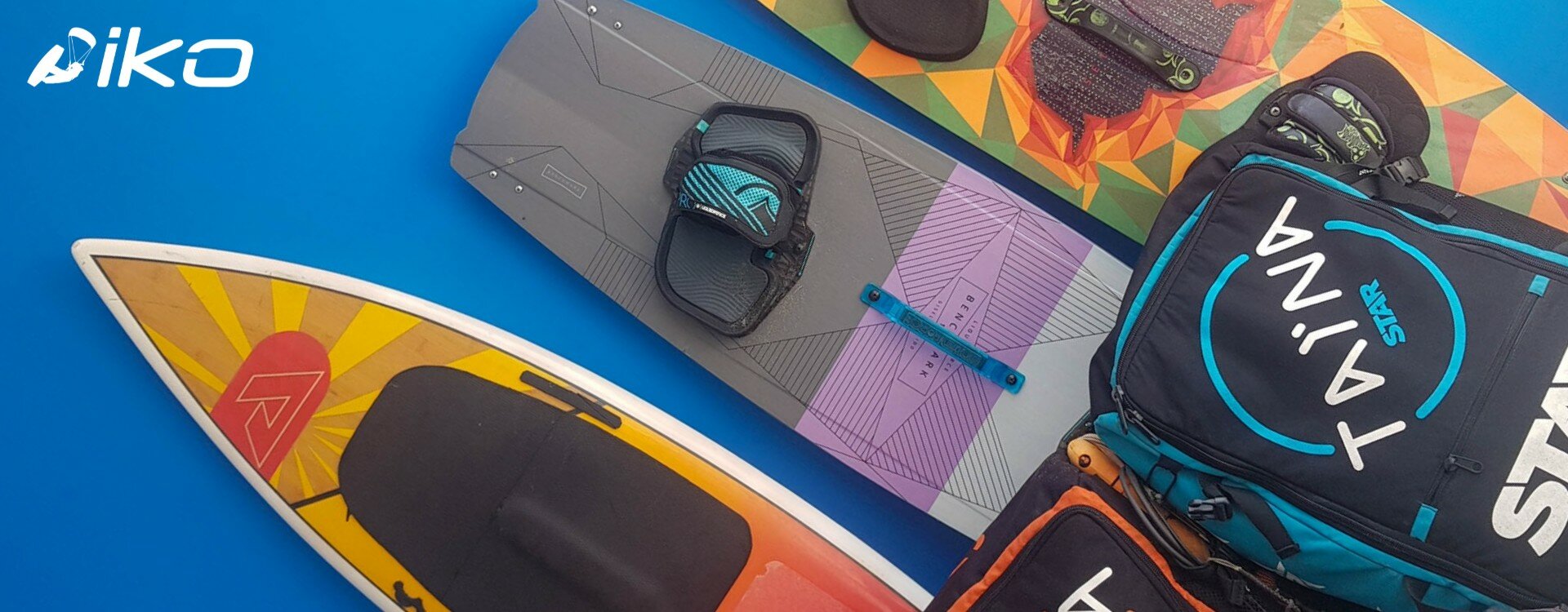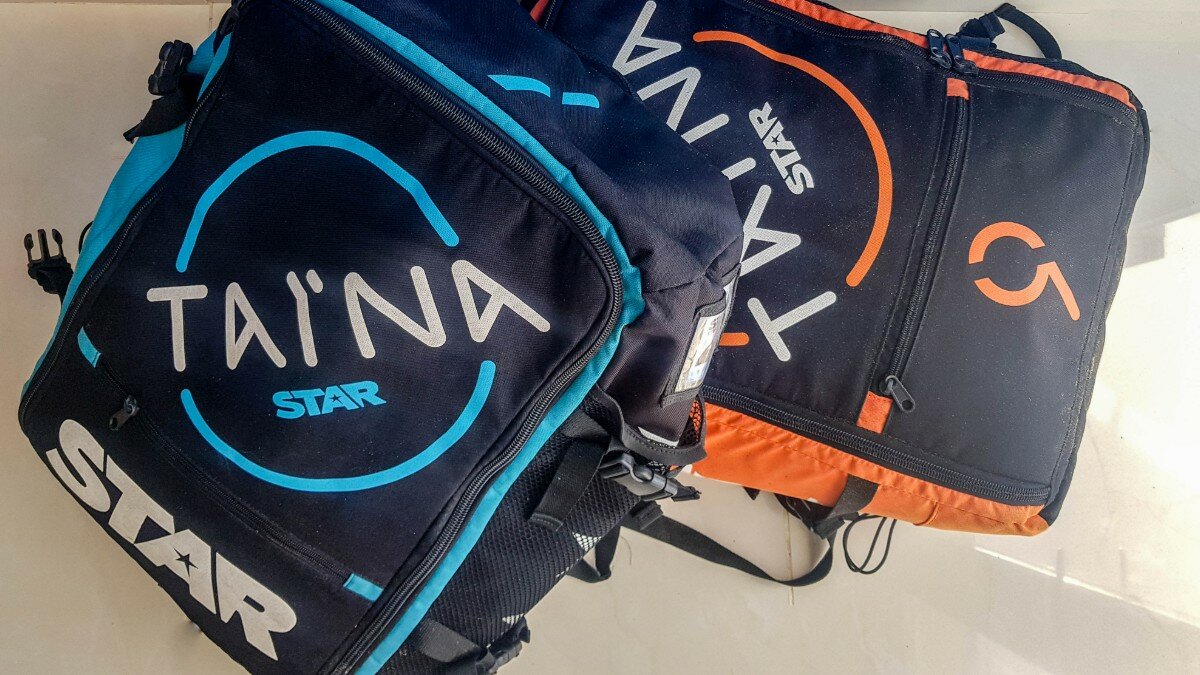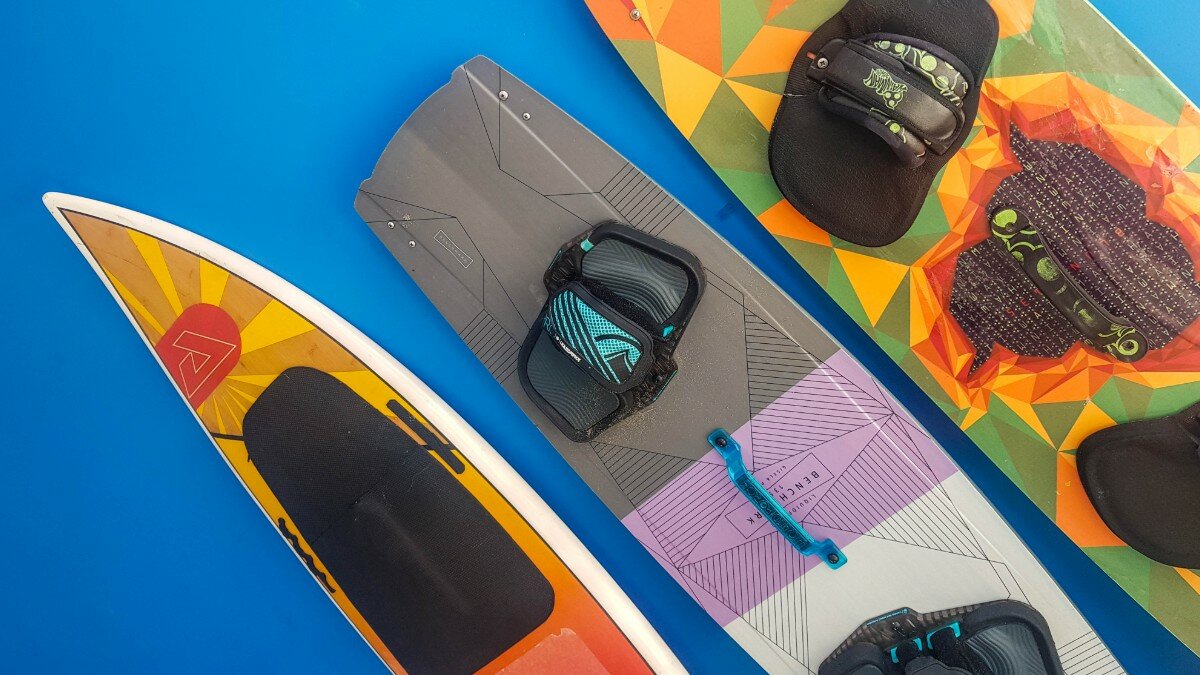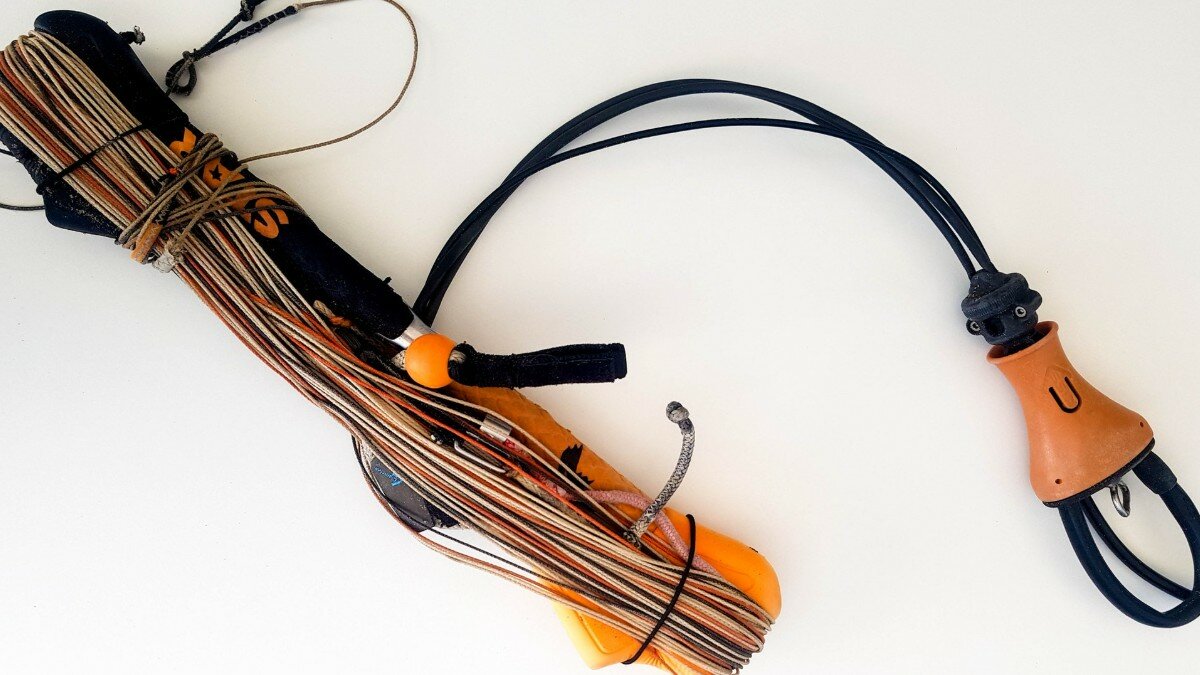Try the new IKO website at https://beta.ikointl.com/

Used Kitesurf Gear Buyer's Guide
Author: Bradley Mackelden
So, you have completed your first few kitesurf lessons at your local IKO affiliated kite center. Already you find yourself spending numerous evenings trolling the internet for kitesurf equipment. Wanting to purchase your first setup, you come to the unforeseeable realisation that this will get expensive. Very expensive!!!
You are desperate to get kites of your own and turn to the second-hand market in the hope to find a better price. You soon realise that you have no idea what you are looking for, what's hot and what's not?
Well, that's where this article will come in handy! I am here to give you some guidance on buying used kitesurfing equipment so you can turn up to the beach with a decent setup that is safe and user friendly. Not something from the dinosaur ages that will likely lead to an unfavourable ending.
Why buy used?
Save money
Most kitesurfers tend to have three kites in their quiver, at least one board, a harness, a bar or two and other necessary accessories such as a pump, wetsuit, leash, etc. Most new kites cost between $1000 to $2000 each. The total cost is soon going to exceed $5000 for a completely new set up.
You may be asking, why not just get one kite? Well, the answer is that one kite will restrict you to limited wind conditions. If you live in a country where the wind is consistently the same speed, this may be an option. However, if you live somewhere with everchanging wind speeds like the U.K. Having at least two kites is necessary.
Buying used equipment will save a lot of money. Instead of purchasing only one new kite, you may be able to get two or three used kites for the same price.
Save Equipment
When learning, you will inevitably crash the kites. Why spend thousands of dollars on new kites when you have a high chance of damaging them in your first few months of learning? If your kite control is excellent and you do not crash the kite, this may not apply to you. But if you are frequently crashing, is it worth risking all that cash?
Buying used gives peace of mind that if you crash the kite, it's not the end of the world. Once the kite control has improved, then you can think about buying new kites.
Used buyer's guide
Kites, what's hot?

A kite less than five years old
Kites have developed tremendously in the past five years. Modern kites are more user-friendly and manufactured from better quality materials.
Crispy canopy
A crispy canopy will still have a slightly stiff, waxy quality to it. A crisp canopy means that the kite has not seen much use. Bang for your buck!
Popular brand
Research what brands are the top brands in the market. They are popular for a reason! Get a kite from an established brand. It will likely perform well plus the resale value will be high.
Kites, what's not?
A kite more than five years old
Try to avoid buying a kite that's more than five years old. Some older kites are not very user friendly. A kite older than five years will likely have seen a high amount of use. You don't want to be paying for a saggy bag!
Tissue paper
I refer to a kite as being like tissue paper if it's had lots of use. The canopy of the kite will feel very soft, flimsy and old. This is a sign the kite has been heavily used. Always look at the kite in detail and feel the canopy when buying used.
Repairs
Check for pinpricks, which are tiny holes in the canopy of the kite. Also, check for any canopy repairs, patches etc. Ask the owner if the bladder has been repaired. Repairs are not the end of the world if they have been well repaired. If a repair has been professionally done, It will not put me off. If it has been repaired at home I will be more cautious.
Bonus tips
Valve connection
Make sure the valve connection matches your pump attachment.
Connection points
Ensure the connection points will be compatible with the bar you already have or are planning on buying.
Inspect the kite
Take your time to look thoroughly over the kite. Make sure there is no extra damage that has not already been pointed out to you.
Boards, what's hot?

A board suitable for your ability
Don't make the mistake of buying a shortboard. Buy something to aid your learning! A longer board will be easier to ride upwind and this will help when learning. For a mid-weight rider, look for something 140cm plus to start.
Flat rocker
Try to find a board with a mellow/flat rocker. When looking down the boards' edge, the rocker can be seen as the curved shape from nose to tail. It's best to have a flatter board for learning as it will get on the plane faster and ride upwind better.
Board with straps
Purchase a board with foot straps included. Some brands have different spacing between the foot strap inserts, therefore, not all straps are compatible with every board.
Boards, what's not?
Retro shape
Avoid a board with a drawn in nose and tail. Boards' of this shape can be difficult to ride upwind on.
Cracks and delamination
Certainly, avoid a board that has started to delaminate. Bubbles are a sign of delamination. It will only get worse! Superficial scratches and general wear and tear are fine but make sure it stops at this. Inspect the board to make sure there are no cracks in the deck.
Small fins
When learning, you should have large fins on your board. Large fins will offer increased grip and upwind performance. Small fins are great for advanced riders but not ideal for beginners.
Bar & lines, what's hot?

A bar less than two years old
In my opinion, the bar & lines are the most important piece of equipment. It's what connects the rider to the kite. And should something go wrong with the lines, it's likely to end badly. Modern bars will have the latest technology.
Up to date safety system
Make sure you use either a four-line re-ride safety system or a five-line safety system. Should you need to release the kite onto the safety, you need to be certain that it will release effectively and dump all the power.
Adjustable bar
An adjustable bar is cool because it gives you the option to adjust the width depending on what size kite you are using. This means you can have one bar to cover several different sized kites.
Bars, what's not?
Fraying lines
Unwind all the lines and inspect for signs of wear. If they are heavily used or fraying, I suggest looking elsewhere.
Knots in the lines
Ensure there are no knots in the lines as these can create weak points and sometimes can be extremely difficult to remove.
Retro safety system
Avoid any safety system which is not a four-line re-ride system or five-line safety system.
I hope you have found this article beneficial? Why not print this off and take it with you as a guide when buying used equipment. It could save you a lot of money and a lot of stress.
One final note, stay in touch with your local IKO Center. Here at Be-Rad Watersports we are often refreshing our school kites and there can be some excellent deals to be had on used kites. We refresh our equipment every year so you can be sure to get a well maintained up to date kit.
.png)

